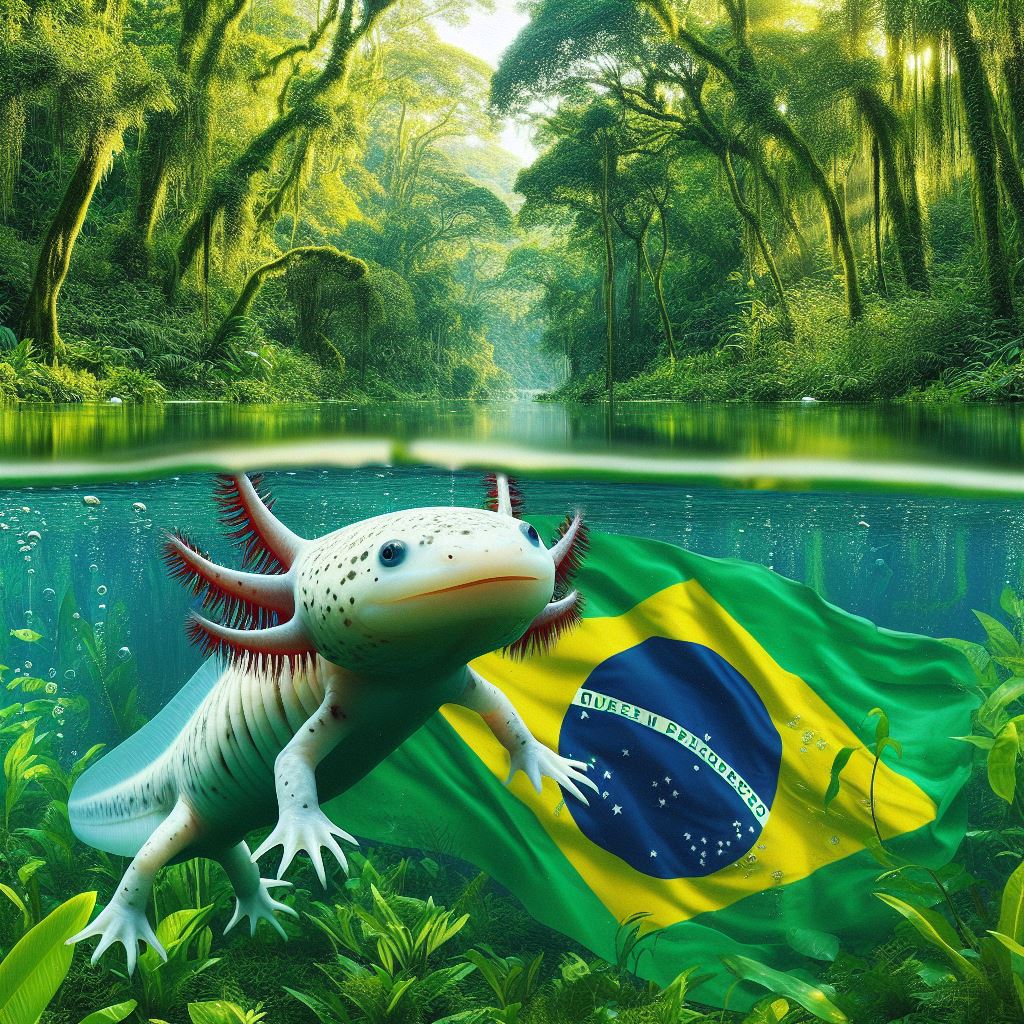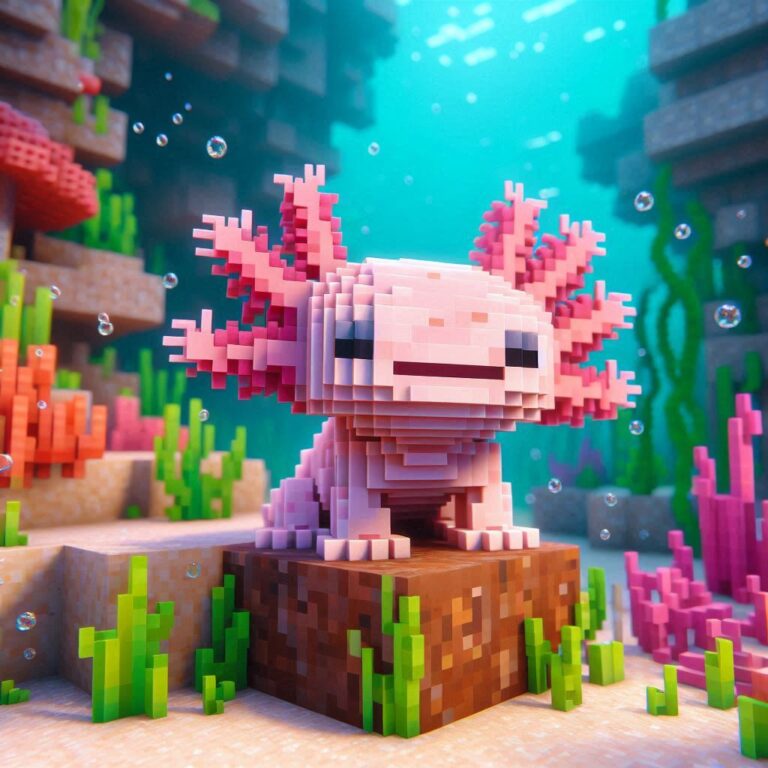
Axolotls, fascinating creatures renowned for their regenerative capabilities, do not naturally inhabit Brazil. Originating from the ancient lake system of Xochimilco and Chalco in Mexico, these unique amphibians have captivated enthusiasts worldwide. While Brazil boasts an incredible array of biodiversity within its borders, including various amphibian species, the axolotl’s native habitat lies thousands of kilometers away. Nevertheless, with proper care and regulation adherence, enthusiasts in Brazil can still enjoy the companionship of these intriguing creatures, creating suitable environments that mimic their natural habitats.
Environment Effect
Axolotls, with their unique physiology and delicate ecological niche, exemplify the interconnectedness between organisms and their environments. In Brazil, where diverse ecosystems thrive, introducing non-native species like axolotls can have both beneficial and detrimental effects. While axolotls themselves do not inhabit Brazil naturally, their introduction into suitable environments could potentially disrupt local ecosystems. However, careful management and regulation can mitigate these risks. Understanding the environmental impact of introducing axolotls into Brazilian ecosystems is crucial for maintaining ecological balance and biodiversity.
Natural Habitat in Brazil
Brazil, renowned for its vast rainforests, diverse landscapes, and rich biodiversity, offers a plethora of natural habitats for various species. While axolotls are not native to Brazil, the country provides suitable environments for many amphibian species. From the lush Amazon rainforest to the expansive wetlands of the Pantanal, Brazil’s diverse ecosystems harbor a wide array of flora and fauna. While axolotls thrive in the cool, oxygen-rich waters of their native Mexican lakes, Brazil’s tropical climate presents unique challenges for amphibian species.
Impact of Climate
The climate of Brazil varies significantly across its regions, from the hot and humid Amazon basin to the cooler temperatures of the southern highlands. For axolotls, which naturally inhabit cool, freshwater environments, the climate of Brazil poses challenges. In warmer regions, maintaining suitable water temperatures for axolotls can be particularly challenging, requiring specialized equipment such as aquarium chillers. Additionally, fluctuations in temperature and rainfall patterns can affect water levels and quality, influencing the overall health and well-being of axolotls in captivity.
Availability of Suitable Habitats
Despite not being native to Brazil, axolotls can thrive in carefully curated captive environments. In urban areas, enthusiasts can create custom-built tanks or ponds equipped with temperature control systems to mimic the cool, oxygen-rich waters of their native habitats. However, ensuring the availability of suitable habitats goes beyond individual efforts. Conservation initiatives and regulatory measures are essential for preserving natural habitats and preventing the introduction of non-native species that could disrupt local ecosystems. By prioritizing habitat preservation and responsible pet ownership, enthusiasts in Brazil can contribute to the conservation of amphibian species both locally and globally.
Legality
In Brazil, as in many countries, the legality of owning exotic pets such as axolotls is subject to specific laws and regulations. While the country boasts a rich biodiversity, authorities are vigilant about preserving native ecosystems and preventing the introduction of non-native species. As such, potential axolotl owners must navigate the legal landscape to ensure compliance. Understanding the legal framework surrounding exotic pet ownership is crucial for enthusiasts seeking to responsibly care for these fascinating creatures while respecting environmental regulations.
Laws and Regulations
Brazilian laws and regulations regarding exotic pet ownership aim to strike a balance between conservation efforts and individual freedoms. Various federal and state-level statutes govern the importation, sale, and ownership of exotic animals, including axolotls. These regulations often require permits, health certificates, and documentation to ensure the legality and traceability of exotic pets. Additionally, certain species may be protected under endangered species legislation, further regulating their trade and ownership. Staying informed about these laws and regulations is essential for axolotl enthusiasts to avoid legal consequences and contribute to conservation efforts.
Permits and Licenses
Obtaining permits and licenses is a fundamental aspect of legally owning axolotls in Brazil. Depending on the species and local regulations, individuals may need to acquire permits from environmental agencies or wildlife authorities. These permits typically involve demonstrating the ability to provide appropriate care for the animals and complying with specific housing and maintenance requirements. Additionally, breeders and sellers may need licenses to legally trade axolotls, ensuring transparency and accountability within the pet trade industry.
Enforcement
Enforcement of laws and regulations pertaining to exotic pet ownership is vital for maintaining ecological balance and preventing the illegal trade of wildlife. Brazilian authorities collaborate with environmental agencies, law enforcement, and wildlife rescue organizations to monitor and enforce regulations concerning axolotls and other exotic species. This enforcement involves inspections, audits, and investigations to ensure compliance with legal requirements and address instances of illegal trafficking or mistreatment. By promoting awareness and accountability, effective enforcement mechanisms safeguard both animal welfare and environmental integrity, fostering a harmonious relationship between humans and wildlife in Brazil.
Axolotl Price in Brazil
The cost of acquiring an axolotl in Brazil can vary depending on a multitude of factors, ranging from its age and coloration to its morphological traits. As with any exotic pet, the price tag reflects not only the initial investment but also the long-term commitment required for responsible ownership. Understanding the price dynamics within the Brazilian market is essential for prospective axolotl enthusiasts to make informed decisions and ensure the well-being of their future aquatic companions.
Cost Factors
Several factors influence the cost of axolotls in Brazil, with rarity and demand being primary determinants. Axolotls with unique color variations or rare morphological traits may command higher prices due to their novelty and appeal to collectors. Additionally, factors such as the age, size, and breeding history of the axolotl can impact its value. Moreover, expenses related to habitat setup, maintenance equipment, and veterinary care should also be considered when assessing the overall cost of owning an axolotl in Brazil.
Market Variations
The axolotl market in Brazil exhibits variations across different regions and outlets, from pet stores to online platforms and breeders. Prices may fluctuate based on geographical location, accessibility, and competition within the market. Additionally, seasonal fluctuations and breeding trends can influence supply and demand dynamics, leading to temporary price adjustments. Enthusiasts should research and compare prices from various sources to ensure they are getting fair value for their investment while supporting reputable breeders and sellers.
Average Prices
On average, the cost of purchasing an axolotl in Brazil typically ranges from 154 to 386 Brazilian Real (BRL), with variations depending on the factors mentioned earlier. Juvenile axolotls are generally more affordable than adults, as they require less investment in terms of care and maintenance. However, premium specimens with desirable traits may command prices at the higher end of the spectrum. It is essential for prospective owners to budget not only for the initial purchase but also for ongoing expenses such as habitat maintenance, feeding, and healthcare to ensure the well-being of their axolotl companions.
Pros and Cons of Owning Axolotls in Brazil

Owning axolotls in Brazil comes with its own set of advantages and challenges, making it essential for enthusiasts to weigh the pros and cons before committing to these fascinating amphibians.
Pros:
- Fascinating Pets: Axolotls are captivating creatures with unique characteristics, including their regenerative abilities and distinctive appearance. Owning axolotls can provide endless fascination and enjoyment for enthusiasts in Brazil.
- Low Maintenance: Compared to traditional pets like dogs or cats, axolotls require relatively low maintenance. They do not require daily walks or constant attention, making them suitable for individuals with busy lifestyles.
- Educational Opportunities: Keeping axolotls can serve as an educational experience for both children and adults. Observing their behaviors, studying their biology, and learning about their natural habitat can foster a deeper appreciation for aquatic life and conservation efforts.
- Decorative Aquatic Display: Axolotls make excellent additions to aquascaped tanks or naturalistic habitats. Their graceful movements and striking appearance add aesthetic appeal to any aquatic display, enhancing the ambiance of a living space.
- Therapeutic Benefits: Many people find watching and caring for axolotls to be therapeutic and stress-relieving. Their calming presence and serene underwater environment can promote relaxation and mental well-being.
Cons:
- Specialized Care Requirements: Axolotls have specific care requirements, including temperature-controlled environments, suitable filtration systems, and proper water quality parameters. Meeting these requirements can be challenging, especially in regions of Brazil with warmer climates.
- Potential Health Issues: Axolotls are susceptible to various health issues, including fungal infections, bacterial diseases, and stress-related ailments. Maintaining optimal water conditions and providing a balanced diet are essential for preventing health problems.
- Limited Availability of Veterinary Care: Finding veterinarians with expertise in exotic aquatic species like axolotls can be challenging in Brazil. In the event of health issues or emergencies, access to specialized veterinary care may be limited, requiring owners to be proactive in researching and planning for their axolotls’ well-being.
- Regulatory Compliance: Owning axolotls in Brazil requires compliance with local laws and regulations regarding exotic pet ownership. Obtaining permits, adhering to importation restrictions, and ensuring ethical sourcing of axolotls are essential considerations for responsible ownership.
- Long Lifespan: Axolotls have relatively long lifespans, with individuals capable of living up to 10-15 years in captivity. Potential owners should be prepared for the long-term commitment required to care for axolotls throughout their lives, including providing proper housing, nutrition, and enrichment.
FAQs
Q. Can I legally keep an axolotl as a pet in Brazil?
A. Yes, you can, but you need to comply with specific regulations and obtain permits from environmental authorities.
Q. Are axolotls native to Brazil?
A. No, axolotls are not native to Brazil. They are indigenous to Mexico.
Q. What kind of environment do axolotls need to thrive in Brazil?
A. Axolotls require a cool, clean, and well-oxygenated aquatic environment with low lighting. Proper filtration and water quality maintenance are crucial.
Q. What is the average price of an axolotl in Brazil?
A. The price of axolotls can vary depending on factors such as age, color, and morph. On average, they can range from R$154 to R$386 in Brazil.
Q. Do axolotls require any special care in Brazil due to the climate?
A. Yes, in warmer regions of Brazil, you may need to use aquarium chillers or keep the water temperature lower to simulate their natural habitat conditions.
Q. Can axolotls be housed with other fish or aquatic animals in Brazil?
A. Axolotls are best kept in species-specific tanks due to their unique requirements and potential for aggression towards other tank mates.
Q. How often do axolotls need to be fed in Brazil?
A. Axolotls are typically fed two to three times a week in Brazil, depending on their size and age. Overfeeding should be avoided to prevent health issues.
Q. Are there any specific diseases or health concerns I should watch out for in axolotls in Brazil?
A. Axolotls are susceptible to various health issues, including fungal infections, bacterial diseases, and parasitic infestations. Regular water quality monitoring and proper tank maintenance are essential for their well-being.
Q. What is the lifespan of axolotls in Brazil?
A. With proper care, axolotls can live up to 10-15 years in captivity in Brazil.
Q. Can axolotls in Brazil regenerate lost body parts like their counterparts in the wild?
A. Yes, axolotls retain their remarkable regenerative abilities in captivity, and they can regenerate lost limbs, tails, and even parts of their organs under the right conditions.
Conclusion
In conclusion, owning axolotls in Brazil presents both opportunities and challenges for enthusiasts. These fascinating amphibians offer unique companionship, educational experiences, and therapeutic benefits, while also requiring specialized care and attention to ensure their well-being. While the allure of owning such captivating creatures is undeniable, prospective owners must carefully consider the commitment involved, including meeting their specific habitat requirements, addressing potential health issues, and navigating legal regulations.

Hassan Shah carries over four years of hands-on expertise in caring for axolotls, guided by his cherished companion ‘Little Bruno,’ a thriving axolotl under his attentive care for three years.



